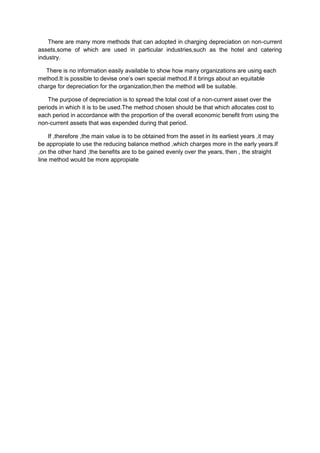Denunciar
Compartir

Recomendados
Más contenido relacionado
Similar a Far150
Similar a Far150 (20)
pwc-using-multiple-discount-rates-develop-benefit-plan-cost

pwc-using-multiple-discount-rates-develop-benefit-plan-cost
BudgetingUsing concepts like flexible budgeting and participativ.docx

BudgetingUsing concepts like flexible budgeting and participativ.docx
The biggest challenge to analyzing and computing costs is the allo.docx

The biggest challenge to analyzing and computing costs is the allo.docx
Budgeting is extremely important, whether for personal or business.docx

Budgeting is extremely important, whether for personal or business.docx
Read Chapter 13 from Page 216-234Based on the literature answe.docx

Read Chapter 13 from Page 216-234Based on the literature answe.docx
The Advantages of Budgeting A budget is a document that fo.docx

The Advantages of Budgeting A budget is a document that fo.docx
Más de sakura rena
Más de sakura rena (20)
Topic 8 audit of revenue & receipts cycle + acc receivable (1)

Topic 8 audit of revenue & receipts cycle + acc receivable (1)
Topic 9 audit of purchase and payment cycle + acc payables (1)

Topic 9 audit of purchase and payment cycle + acc payables (1)
Topic 2 objectives and scope of financial statement audit

Topic 2 objectives and scope of financial statement audit
Topic 3 companies act 1965 requirements &mia by law

Topic 3 companies act 1965 requirements &mia by law
Topic 8 audit of revenue & receipts cycle + acc receivable

Topic 8 audit of revenue & receipts cycle + acc receivable
Topic 9 audit of purchase and payment cycle + acc payables

Topic 9 audit of purchase and payment cycle + acc payables
Far150
- 1. There are many more methods that can adopted in charging depreciation on non-current assets,some of which are used in particular industries,such as the hotel and catering industry. There is no information easily available to show how many organizations are using each method.It is possible to devise one’s own special method.If it brings about an equitable charge for depreciation for the organization,then the method will be suitable. The purpose of depreciation is to spread the total cost of a non-current asset over the periods in which it is to be used.The method chosen should be that which allocates cost to each period in accordance with the proportion of the overall economic benefit from using the non-current assets that was expended during that period. If ,therefore ,the main value is to be obtained from the asset in its earliest years ,it may be appropiate to use the reducing balance method ,which charges more in the early years.If ,on the other hand ,the benefits are to be gained evenly over the years, then , the straight line method would be more appropiate
